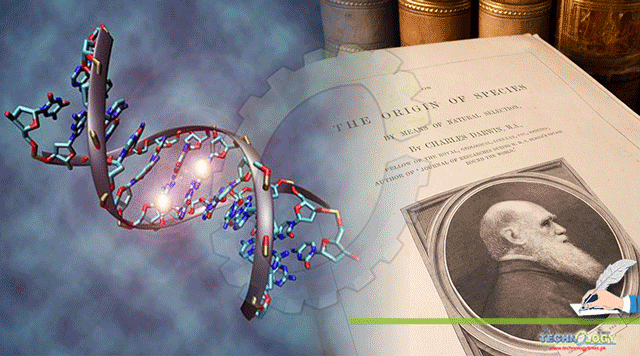In A Nutshell, Evolution Can Be Explained Better On Molecular Basis With The Unification Of Neo-Lamarckism And Neo-Darwinism.

The coalesce subject of modern biology is based on the Darwin’s theory of evolution, the process of natural selection, organisms change with the course of time and the fittest ones are selected by the nature to reproduce and survive. Such changes bring new variants of species. At that time when Darwin gave the concept of evolution it lacked the explanation on molecular basis. But modern genetics and molecular biology have given us the outline of how evolution happens I.e. neo-Darwinism.
But several studies have suggested that there exist some other molecular factors that contribute prominently in the pipeline of evolution of some species. There is also a problem with the Darwin theory that the mutation rate of complex organisms is too slow to explain the changes contribute in the process of evolution. Scientists compensate this by proposing different genetic theories like genetic drift and epistasis. Hence, swift origination of some traits is difficult to explain on the basis of classical genetics.
Some other questions also arose the answers to them are hard to give just relying on the theories of Darwin and classical genetics like why identical twins, having the same genes, generally catch different types of diseases as if phenotype is genetic based? How is it possible that environmental contaminants can change the assault of disease, rendering the DNA Sequences? Why the phenotypic trait divergence rate is higher than the genetic mutations and variations?
Answers to above mentioned questions partly can be explained by Lamarckism, according to Lamarck’s theory of evolution, environment has great effect on phenotype of organisms and these changes could pass to next progeny, same concept had been proposed by a developmental biologist Conrad Waddington of the University of Edinburgh stated that fruit flies at the embyonic development stage if exposed to enivironmental contaminants or change in the temperature could bring about variations in the wings structures and that variations could also pass to next progeny. Waddington showed up with a modern term – ‘epigenetics’ – to narrate this phenomenon of rapid change. That single generation variation was in support to Lamarck’s theory as it was seen that environment could impact traits.
With the advancement in molecular biology and genetics, Lamarck’s theory and Waddington’s concepts are now making some discernment. Several environmental factors can turn on and off many genes hence changing the expression of proteins in cells. Epigenetics, thus, involve several molecular processes that can change the gene expression without altering the DNA sequences. Epigenetic modifications include DNA methylation and histone modifications. Of them, DNA methylation, in which a methyl group attaches to cytosine at carbon number five, has extensively been explored. This methylation contributes in the gene expression, can permanently be acquired and pass over generations.
Histone modifications involve methylation, acetylation, phosphorylation, ubiquitylation, and sumoylation of histone proteins that are responsible for chromatin structure. These modifications can permanently change the gene expression. Non-coding RNAs is another type that bind to DNA, RNA, and proteins alter the gene expression regardless of DNA sequence. Hence these epigenetic modifications play crucial role in DNA expression regulation. One can conclude that genetics and epigenetics are highly interlinked.
If these epigenetic modifications are inheritable, known as “Environmentally induced epigenetic transgenerational inheritance” has been observed in many species, in plants, birds, rodents, insects, pigs and humans, can play a significant role in evolution. These modifications can run into minimum of ten generations to hundreds as in case of some plants. One example of this was observed by Carl Linnaeus in flowering plants I.e., heat-induced flowering trait, this altered trait had been persisted for hundred generations.
Changed environment effect on the biology of organism strongly goes in favor of Lamarckism as these alterations in traits could be observed in next progeny. Darwin also put forward the importance of environment in evolution process and if these environmental factors persist for large span of time, the changes we observe then go in correspondence with Lamarckism by epigenetic means.
A recent study was conducted on the speciation of finches, observed by Darwin on Galapagos islands, changes in phenotype no doubt were results from DNA mutations but an interesting thing that was explored is that epigenetics alterations(epimutations) are larger in number and more related to phylogenetic distance among species.
There are other more obvious evidence in support of epigenetics playing a critical role in evolution. In a nutshell, evolution can be explained better on molecular basis with the unification of neo-Lamarckism and neo-Darwinism, as both are responsible for evolution and highly interlinked. Infact, trait variations within the population can be increased by environmental epigenetics, which empower natural selection.
Scientists are now accepting the role of epigenetics in the process of evolution as evolution could not be justified just on the basis of classic theories of Darwin. Lamarck’s concept with the addition of science of epigenetics cannot be just put back and ignored. By accepting, Lamarck’s ideas there is no mean to disrespect the classical genetics and Darwinism. Indeed, there unification could change the understanding of evolutionary scientists and will help us to understand the insight concept of evolution. Genetics and epigenetics should not be considered as conflicting subjects. Evolutionary processes like genetic drift and genetic assimilation could easily be grasped with the understanding of epigenetics. Evolution explanation needs a unified theory combination of Darwinism and Lamarckism and integration of them would give us broad and better view of molecular causes that control life.